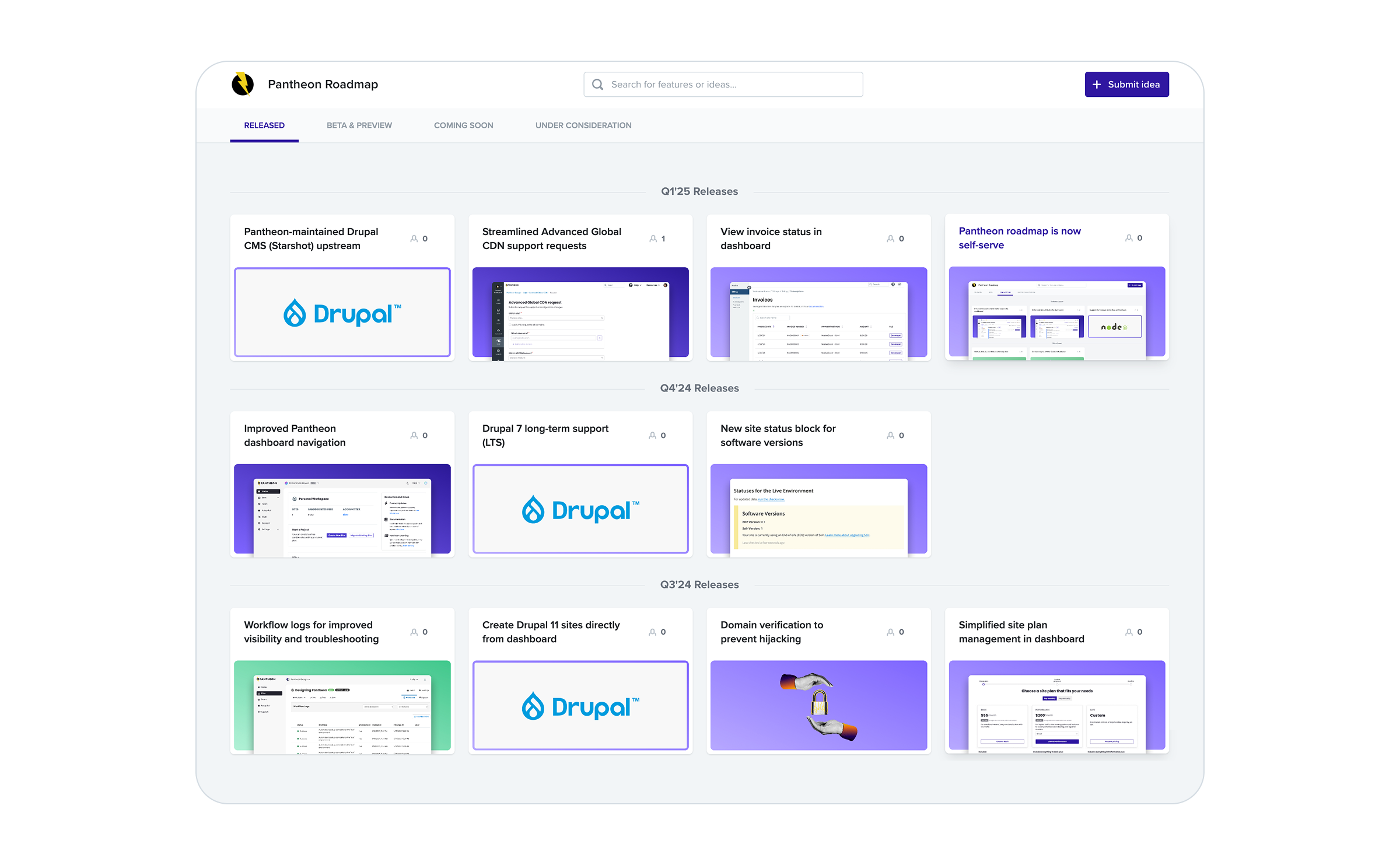Best Practices for an Agile Retrospective
Retrospective meetings are critical components of working within agile principles. These meetings provide opportunities for teams to reflect on their latest sprint, learn what worked well, call out openings for improvement, and discuss how to leverage that knowledge to propel forward.
Some companies hold retrospectives at the close of a single sprint or after a few iterations. If the priorities or requirements change suddenly, a retrospective meeting might even be held mid-sprint.
When the Pantheon marketing team went through the process of becoming certified ScrumMasters, we held a retrospective immediately after training to reflect on the education itself. We examined our departmental and working group meetings and the tools we use to manage projects and established guidelines for how we plan and complete projects. We immediately discovered elements to change, we tested new ways of collaborating, and we iterated on those results.
The Ineffective Retrospective
Unfortunately, when not implemented properly, retrospectives become unproductive or—even worse—discouraging.
Sometimes the same topics will keep popping up, which makes it appear that nothing is being accomplished. If it continuously feels like progress isn't being made, that may be a sign that the tasks need to be made clearer and more actionable.
Occasionally, a meeting will disintegrate into finger-pointing. Team members need to avoid personal attacks and instead focus on the process, not the person, when offering critical feedback. Participants should attend the meeting with an open mind and be respectful to others on the team. Moderators must establish clear rules of engagement that they enforce as necessary to avoid any pitfalls that can occur.
And don’t just have a meeting because agile says so! When teams run retrospectives just because the agile guidelines suggest them, participants can feel distracted or disinterested. The understanding that retrospectives give teams the power to solve problems needs to come from within.
Holding Productive Retrospectives
To implement productive retrospective meetings, follow these five guidelines:
1. Schedule a meeting with a time-boxed agenda.
Make sure the meetings are scheduled ahead of time, held in person or on a video conference, and attended as a group. Avoid retrospectives over email or with individual team members. Ideally, the meetings should last 30 minutes to one hour, but they can be made longer or shorter depending on the scope of the meeting.
Time-box the agenda to keep the meeting focused and moving forward. For example, a 30-minute retrospective would be scheduled as:
5 minutes: Establish the rules for engagement and review the agenda.
10 minutes: Discuss what went well on the project (“I like”).
10 minutes: Discuss what needs improvement or could have gone better (“I wish”).
5 minutes: Highlight and group concepts that need improvement (“We Will”). This helps provide a framework for future iterations.
2. Set clear boundaries for the conversation.
Focus on the process, not the people. Retrospectives need to be a safe space for team members to provide honest feedback about the project. Define the time period and discussion points, and focus on improvements.
Work to create a culture where team members can give and take constructive feedback. The leaders of Pixar Animation use what they call the “brain trust” for feedback. The rules are clearly defined and require that everyone involved be ready and willing to hear the truth without taking anything personally.
3. Encourage full team participation.
An effective retrospective ensures that every team member has the ability to share feedback, without one or two people hijacking the conversation.
Our team does this through sticky notes (or by using a digital platform, like stickies.io, when remote team members are involved). Each member is instructed to write out I like/I wish statements, and then each statement is read to the full group. This ensures everyone’s voice is heard, even those that are less comfortable speaking up in a group setting.
4. Organize feedback into themes.
Once team members have provided their feedback, gather those elements into large themes and look for emerging trends. Create tactical next steps to turn the feedback from concept to action for the next iteration.
It’s important to share out the themes and next steps immediately following the retrospective and actively refer back to these in future sprints to encourage positive actions and processes. There is no point in holding retrospectives if the outcome doesn’t result in a shift in how you do work—even if it is a minor shift.
5. Use the time to solve problems.
Retrospectives offer the perfect opportunity to collectively improve the way you work, so you can better serve your customers. With mounting priorities and commitments, it can become easy to continuously reschedule the meeting or fail to make it a priority, but this could be to your detriment. These sessions offer time for the team to reset. It is better to get ahead of any issues that are plaguing your team, so you can prevent them from happening in future iterations.
Start your team off small, with 30-minute retrospectives to prove the value to the participants. If you run an effective retrospective, your colleagues will likely start to ask for more because of the benefit they get from them. My team did.


